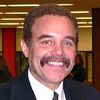The only constant in education is that everyone wants to change it.
That seems especially true today. Some want to loosen public schools' grip on education funding and invest more in charter schools or vouchers. Others want to restructure middle and high schools, change the number of students assigned to a classroom or refocus content so instruction becomes more rigorous.
Communities are trading elected school boards for appointed ones. Others are developing massive online learning platforms, with videos, Facebook, avatars and other cutting-edge technology, because they believe these are the keys to a brighter future.
But while revolution might start at the Board of Education, City Hall, Silicon Valley or Silicon Alley, the real transformation in education -- the kind that counts -- will always happen inside the classroom. If meaningful, deliberative changes in learning and teaching don't take root there, they can't grow.
Yet how do we ensure broad-based change across such a large canvas, one that stretches across 14,000-plus school districts in our country, serving 50 million students and employing approximately 3.2 million teachers and 2.5 million additional administrative and support staff?
The answer is more obvious than some people may think. In her award-winning book, The Pedagogy of Confidence: Inspiring High Intellectual Performance in Urban Schools, education expert Yvette Jackson of the National Urban Alliance for Effective Education tells us how to create classrooms that enable students to significantly improve their academic trajectories.
Through data and anecdotal evidence, Jackson shows how to move beyond a focus on student weaknesses and remediation to a model that views all young people as "gifted students." Further, she advises teachers in how to unlock the gifts of teacher quality, and in doing so revealing a pathway that exposes their students' talents and nurtures their individual strengths and creativity.
"Identifying and activating student strengths encourages students' belief in their potential," Jackson writes. "By focusing on the 'strengths' of all children, teachers [learn to apply what] neuroscience [is teaching], [which helps] to motivate students, no matter where they may fall in their academic performance, to reach sustained and generative achievement."
Neuroscience is critical in this equation, as Jackson and many other educators are coming to realize.
Neuroscience provides biological explanations for how emotions and feelings affect learning. It shows that we learn best in stimulating environments where we know success is possible. And when we feel happy, confident, excited and loved, aided by neurotransmitters, the brain benefits in any number of ways. Dopamine (the reward chemical) is released, or perhaps serotonin (which helps with organizational skills) and oxytocin (the social and love molecule). Norepinephrine, or adrenalin, helps us perform at our best and in a positive way when stressed to push through to success.
The opposite also is true: When we feel threatened, helpless or negatively stressed, the hormone cortisol can flood the body, inhibiting thinking, memory -- and learning.
This is why achievement can be inhibited in those born into difficult environments, where poverty is common and social support for health and welfare lacking. Similarly, cortisol can wreak havoc when students do not feel intellectually safe in their classrooms to come up with a wrong answer, are teased for making a suggestion, or are told by the teacher that they lack sufficient intellectual capacity, based on a social, economic, cultural or racial stereotype.
However, when guided by neuroscience and professional development, teachers learn to develop nurturing relationships with students and introduce complex material in a manner that helps them recognize they know more than they think they know.
For example, unlocking the gifts of reading for urban students and those challenged by poverty, requires, among other strategies:
- Building and activating background knowledge prior to the comprehension challenges in the texts they may encounter;
- Teaching vocabulary taught as concepts in the context of rigorous and engaging subject-matter, not as separate words to learn in isolation of the lesson; and
- Developing student comprehension skills by increasing the difficulty levels of reading materials matched appropriately to the instructional capabilities of readers.
For the nation, the choice is clear: Keep tinkering with elements far from the classroom or support tools that cultivate highly effective teachers.
When teacher-student relationships are strengthened and made more meaningful, hope - so often denied - can rise. In a compelling study, the Gallup organization found that hope stands out as a primary indicator for academic success - more than SAT, ACT or other assessments of academic progress.
Those are the values and systems everyone should support. It is high time we move beyond the polemics of education reform so the "American Dream" can contribute to the greater good: E Pluribus Unum.
Eric J. Cooper is the founder and president of the National Urban Alliance for Effective Education, a nonprofit professional development organization that provides student-focused professional development, advocacy and organizational guidance to accelerate student achievement. He can be reached at e_cooper@nuatc.org.
